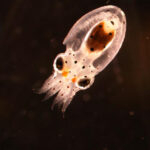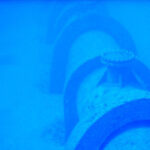We develop research projects and technology assimilation in collaboration with public and private institutions.
The main lines of work of CIMA are:
– Development of protocols for determination of pollutants and integrated analysis of animal and plant communities.
– Cultivation of alternative prey as food for species of socio-economic interest.
– Influence of human activity on coastal marine ecosystems (outfalls, desalination plants, ports, aquaculture, etc.)
– Modeling as a tool to predict environmental responses to disturbing factors of the environment.
Through technological surveillance and thanks to experiences and needs that have emerged in our own projects, CIMA has participated in the development of tools that have assisted in various research projects—both our own and those of other entities.
– CANAMOD: Modeling tool for predicting the environmental response to input of material from aquaculture cages in the Canary Islands.
– MACAROMOD: Organic matter dispersion in aquaculture farms: development of a mathematical model to ensure environmental sustainability.
– Brine discharge impact: Minimization of brine discharge impacts on seabed biodiversity, with special reference to Cymodocea nodosa meadows. Cymodocea nodosa.
Among the R&D&I projects in which our company is currently participating are:
– “Cartography: Study of the Conservation Status of Seagrass Beds in the Eastern Islands: Lanzarote, Fuerteventura, and Gran Canaria,” promoted by the Government of the Canary Islands and co-financed by the FEDER Canarias Operational Program (2014-2020).
– Study of the delimitation, characterization, and distribution of the coralligenous community, and monitoring of the conservation status of protected algal species of the genera Tretacantha, Carpodesmia, and Gelidium. Tretacantha, Carpodesmia and Gelidium.
Visit our projects section to learn more about the work we conduct at CIMA S.L. to research and support marine environment research.









